Digital Camera World Verdict
Google’s first flagship in years has a lot to prove. The Pixel 5 was great, but definitely wasn’t a top-end smartphone, and the Pixel 4 missed the mark for us, with rehashed camera hardware and overheating internals. With the Pixel 6 Pro, Google hits the target. Its camera system has had a hardware refresh, it’s the first Pixel to get a periscope zoom camera, and its design is nothing short of striking. While Google’s Tensor chipset gets hot on first setup and with intense gaming, day to day, we found everything from performance to photography to be impressive on Google’s top-tier flagship – a hands down win for Google.
Pros
- +
Natural, reliable photo processing
- +
Striking design and we love it
- +
Big, bold, punchy screen
- +
Uncluttered Android experience
Cons
- -
Can get warm with heavy use
- -
Battery weak at first, then improves
- -
Ultra-wide lens is fixed-focus
Why you can trust Digital Camera World
The Google Pixel 6 and 6 Pro were announced months ago. In fact, the phones themselves were secondary announcements to Tensor, Google’s new chipset, which replaces Qualcomm’s chips in the new flagship line. With a global silicon shortage having been on the cards for a while, it’s little wonder Google, like Apple is bringing its chips in-house, but that isn’t the only new thing about the Pixel 6 line.
The two new Pixels feature shiny, sleek, novel designs. There’s a raised camera strip around the back akin to Geordi La Forge’s visor, and unlike the Pixel 5, the Pixel 6 and 6 Pro are Gorilla Glass and metal delights. Add a new camera 50MP sensor across both phones, a periscope zoom camera on the Pixel 6 Pro, not to mention the return of an ultrawide selfie camera, and it’s clear Google isn’t going for midrange this time around.
The Pixel 6 and 6 Pro are also aggressively priced, arguably a first for the Pixel line. Rather than costing iPhone 13 Pro Max and Samsung Galaxy S21 Ultra prices, the Pixel 6 Pro starts at $899 / £849, competing more closely with the OnePlus 9 Pro, despite the fact both run with flagship internals – 12GB RAM, 128GB storage, and flagship power.
• See Best Google phones • Pixel 6 Pro vs iPhone 13 Pro
Google Pixel 6 Pro: Design & screen
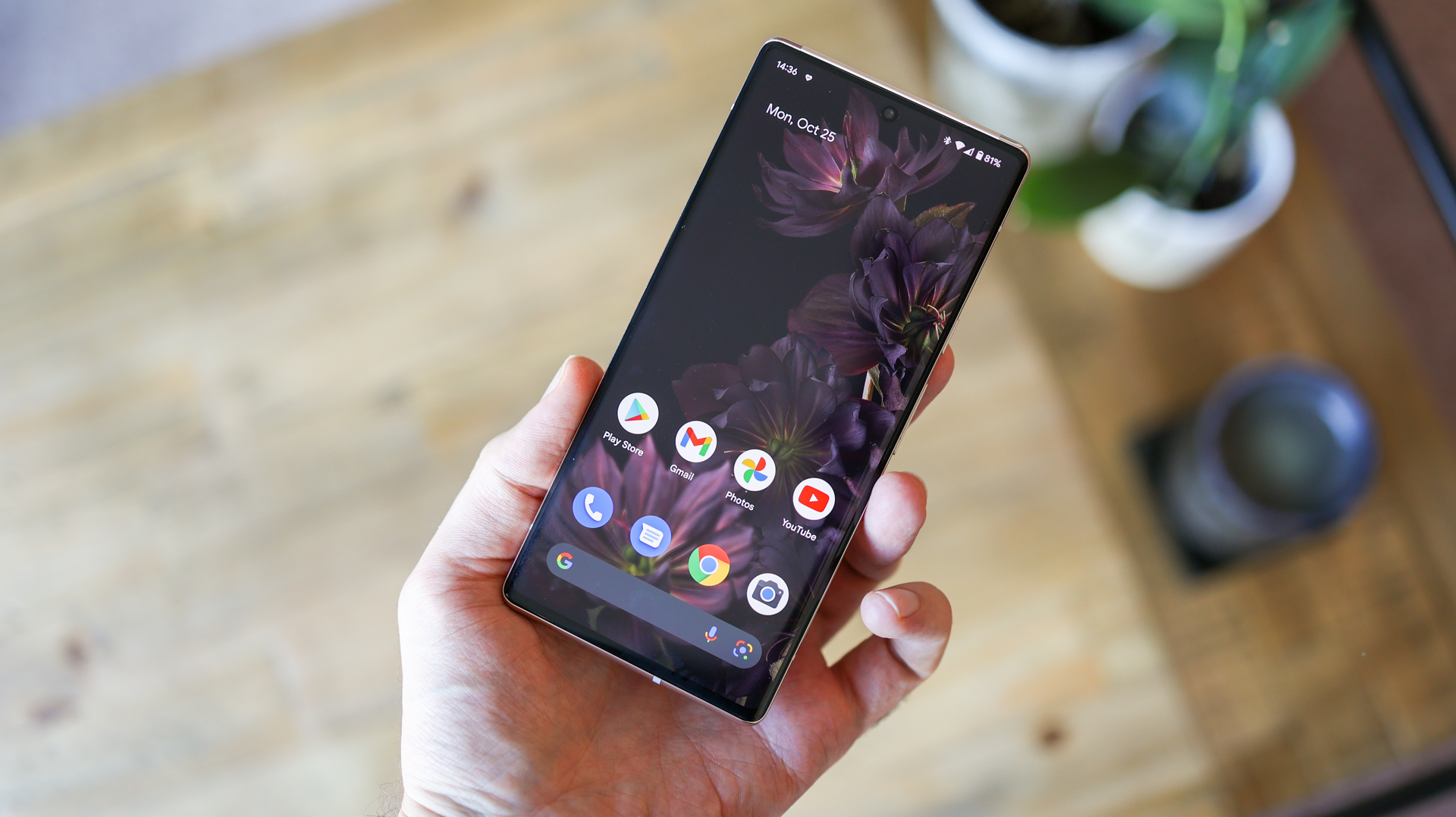
If you want a big, eye-catching phone, then the Pixel 6 Pro is the one to go for. Its 6.71-inch screen looks a lot like that of the Samsung Galaxy Note 20 Ultra, complete with marked corners and a centered punch-hole selfie camera.
We reviewed the Sorta Sunny Pixel 6 Pro, and at a dinner with three chic, tech-savvy 71-year-old ladies, it was the star of the show. The phone’s two-tone glass panel and striking black camera strip, matched with gold metal trimmings all come together beautifully – elegant, but not too gaudy or explicitly gendered, it’s definitely our color pick. Of course, you could also go traditional, in which case, Cloudy White and Stormy Black are also available.
As big as the phone is, it isn’t too thick at 8.9mm. It’s got weight behind it, weighing 210g, though is significantly lighter than a 228g iPhone 12 Pro Max. Just like the aforementioned Apple phone, the Pixel 6 Pro is IP68 water and dust resistant, though its durability doesn’t downplay in sleekness, with the glass on the front and back tapering into the metal frame elegantly.
As for the screen, the big 6.7-inch display is low on bezel with an 88.8 percent screen-to-bezel ratio, and high on pixels, sporting Wide QHD+ resolution (1440 x 3120), which translates to an iPhone beating 512 pixels per inch. Being AMOLED, colors are punchy, and with strong viewing angles and brightness levels, we’re hard-pressed to call it out.
If we were going to nitpick, given the phone’s size and the screen’s curved edge, very occasional edge mis-pressing can happen, specifically when lying down and using the phone, but is a minor quibble, and doesn’t happen anywhere near as much as it did on the Xiaomi Mi 11 Ultra or Note 20 Ultra when they launched.
Pixel 6 Pro: Cameras
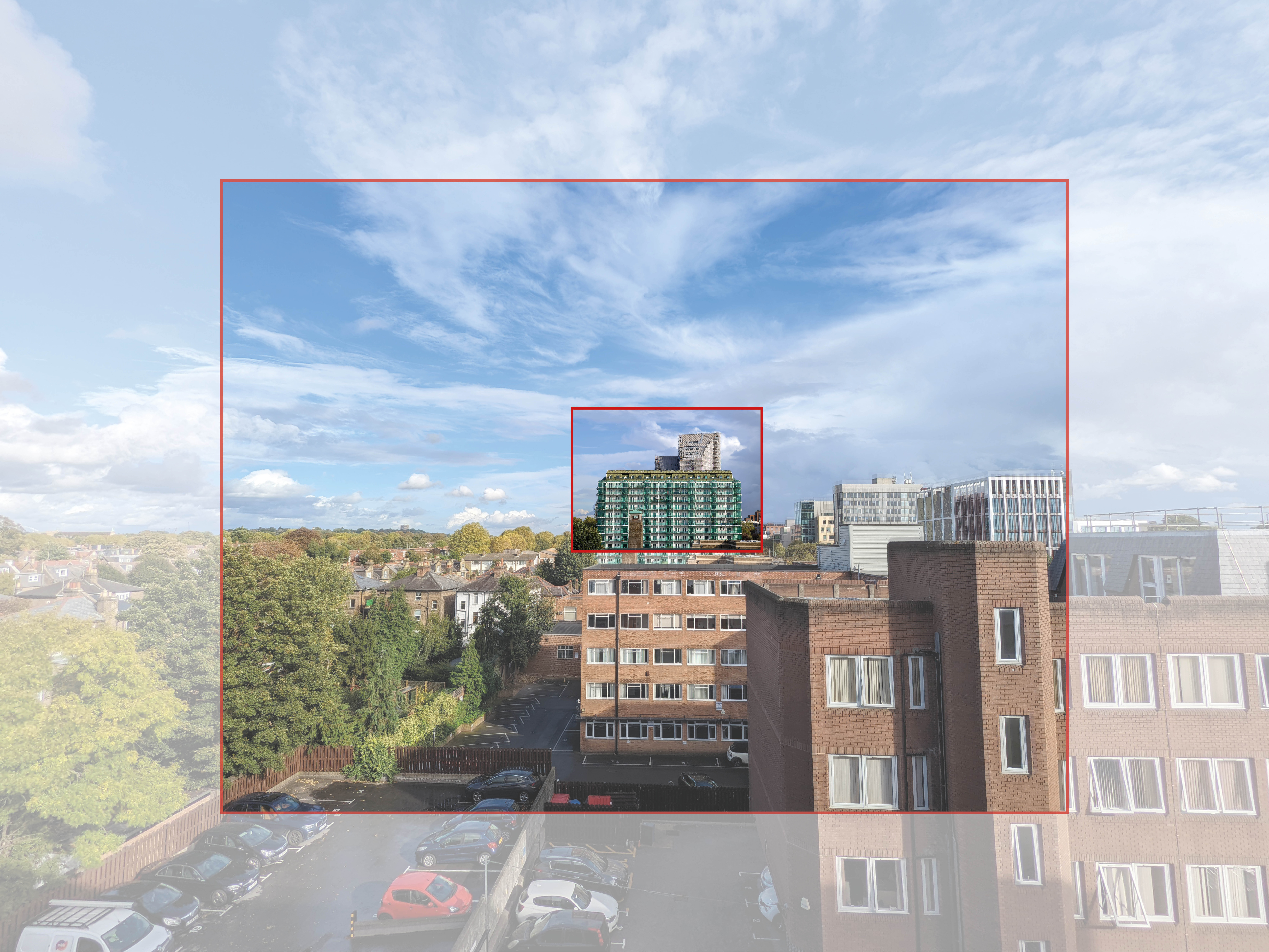
The Pixel 6 Pro boasts an entirely new set of cameras for the line; pretty momentous given Google has become a poster child for successfully rehashing camera hardware.
At the far left of the camera strip around the back of the Pro is a 50MP 1/1.31 sensor, featuring 1.2-micron pixels, omnidirectional phase-detection autofocus, laser autofocus, and OIS. With a 26mm wide-angle and matched with Google’s smart camera software, the main camera should be your go-to option for most things.

The middle camera on the Pixel strip is the ultra-wide, which is the least exciting of the three modules on paper with its fixed focus lens and 12MP resolution. Despite not wowing us with specs, the new ultra-wide module benefits from larger pixels than on the Pixel 5 – 1.25-micron versus 1-micron, and the f/2.2 aperture and 114-degree field of view is also competitive.
Our favorite addition and the far-right camera on the back of the Pixel 6 Pro is the telephoto periscope camera. For us, this camera is reason enough to opt for the Pro over the vanilla Pixel 6, provided you can handle the heft.
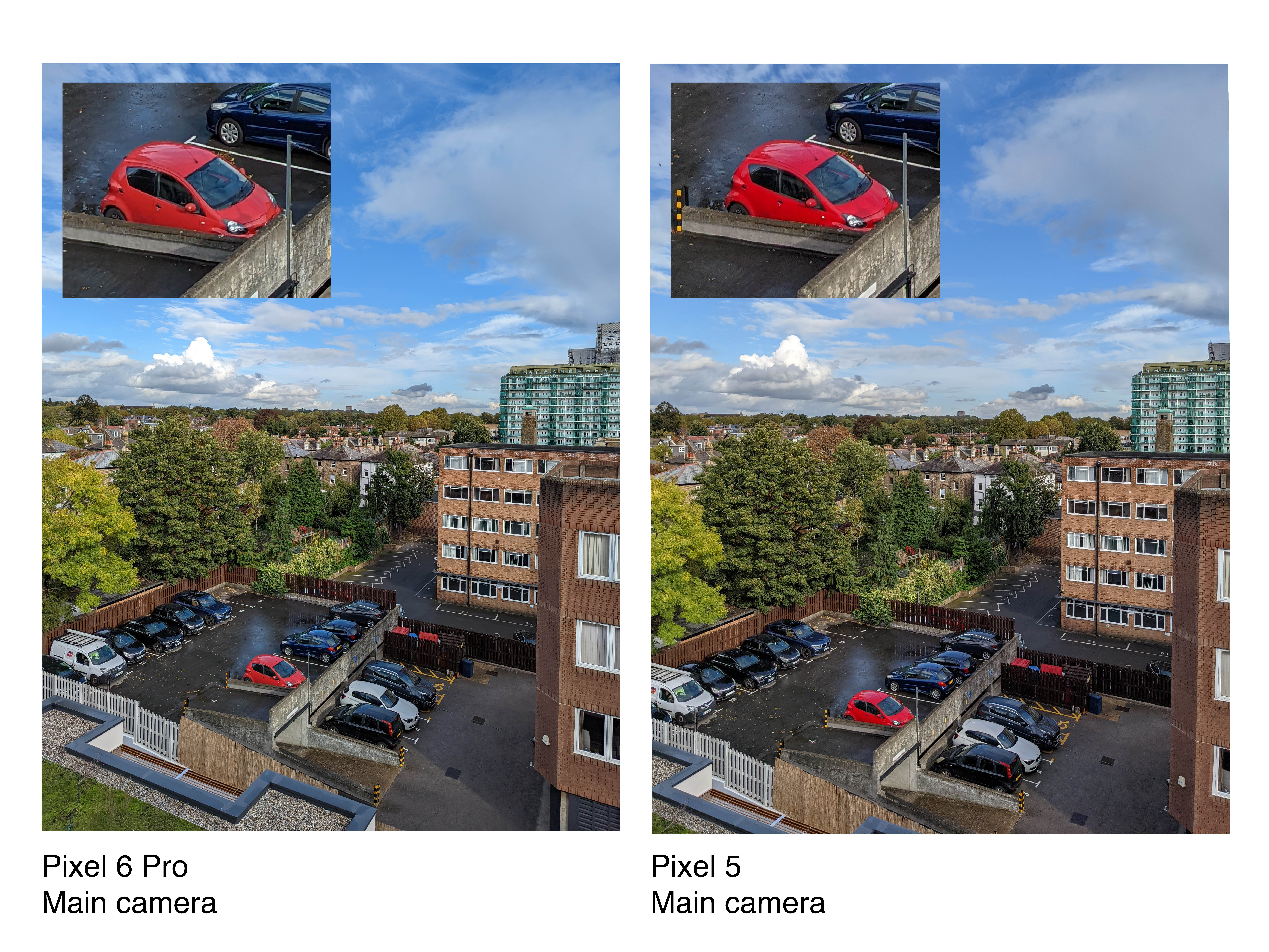
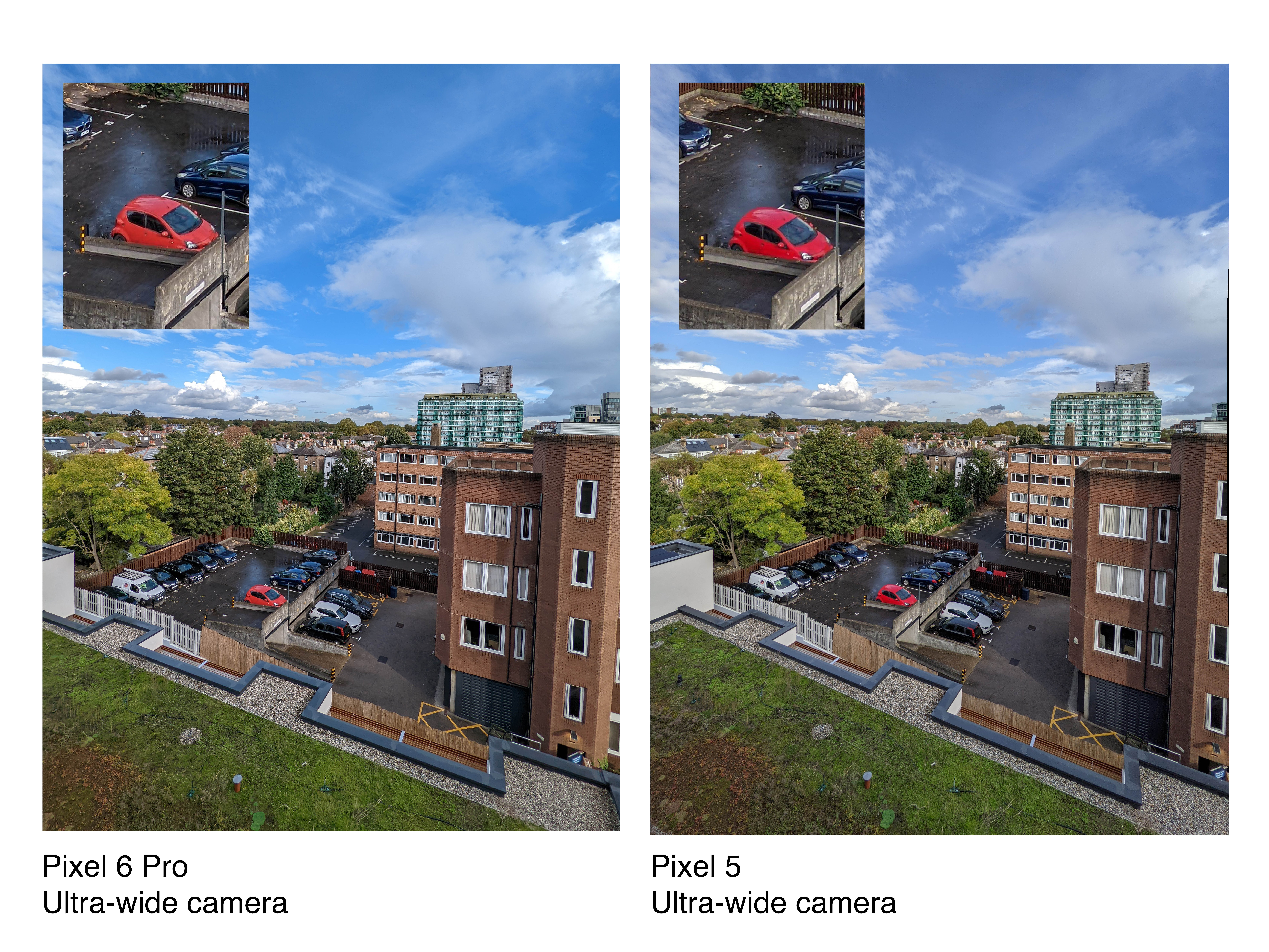
The Pixel 6 Pro’s optical zoom is powered by a 48MP sensor with an f/3.5 aperture, 104mm lens. This means the telephoto module gives you roughly 4x zoom. Now, the sensor is tiny at 1/2 an inch, but thanks to Google’s software know-how matched with OIS, it’s still a cracking addition to the handset.
Shooting modes on the new pixels bring back old favorites – Astrophotography, Night Sight, Panorama, and Photosphere, as well as standard options like Photo, Video and Portrait modes. A new mode for the series, Motion, supports Action Pan shots which keep a moving object sharp while blurring the background, and Long Exposure photos that can be captured handheld.
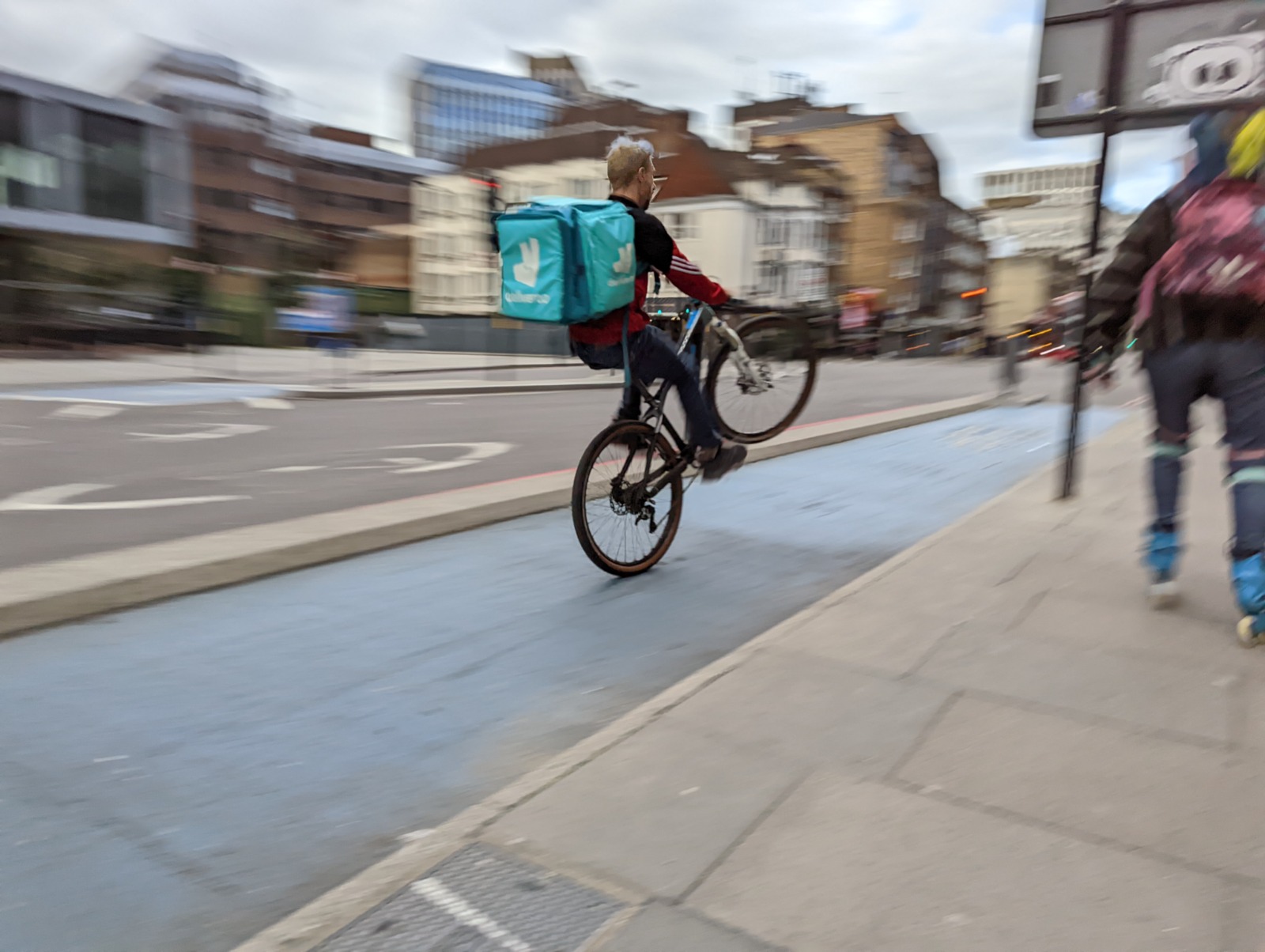
Video is captured at 4K resolution, 60fps, and the default UI supports easy switching between Bluetooth and on-device microphones, which is very handy. While you can shoot RAW photos, there’s no out-of-the-box manual camera capture option, though plenty of third-party apps are available in the Google Play Store that open up manual photo and video capture, including the Lightroom app.
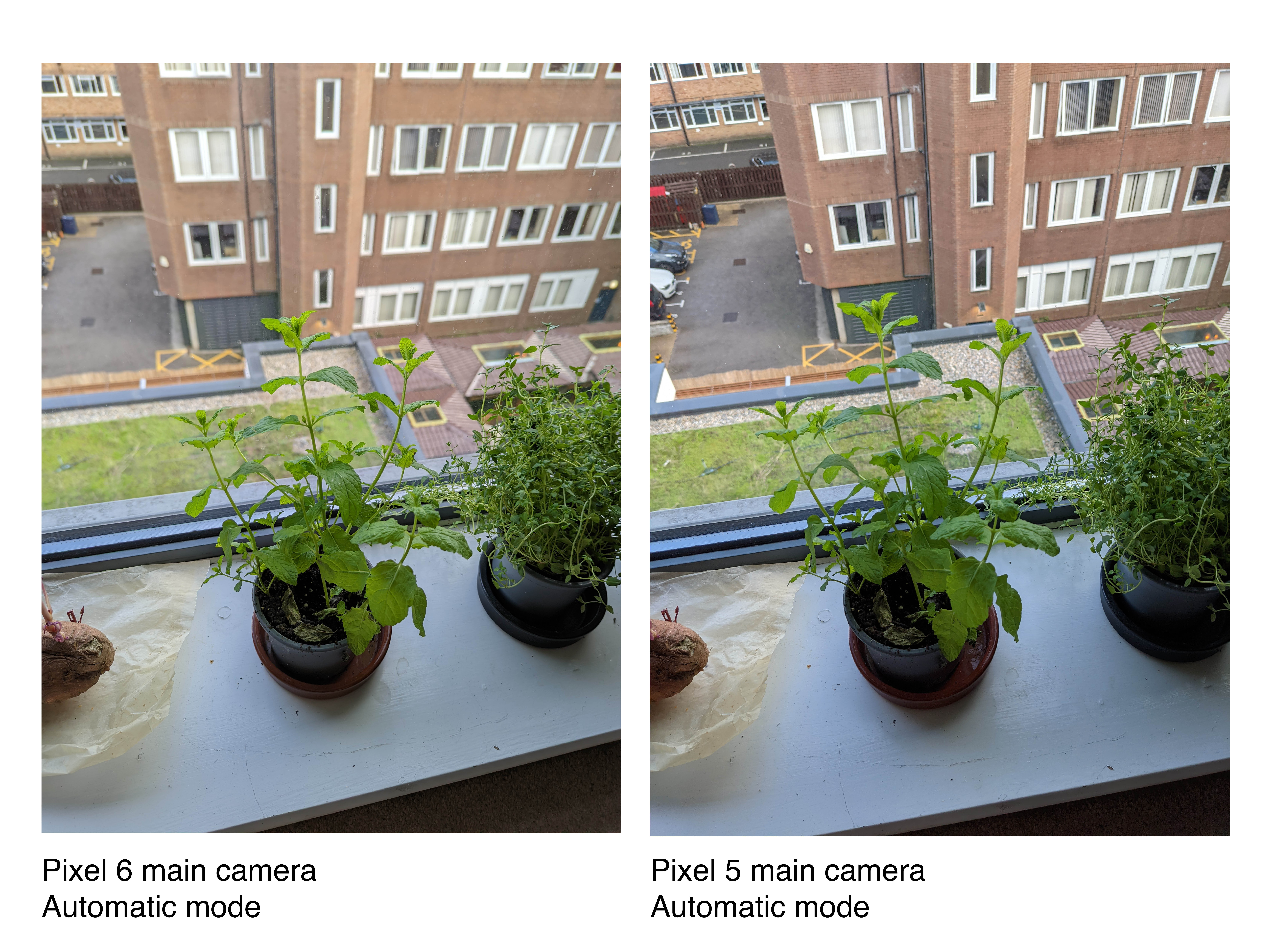
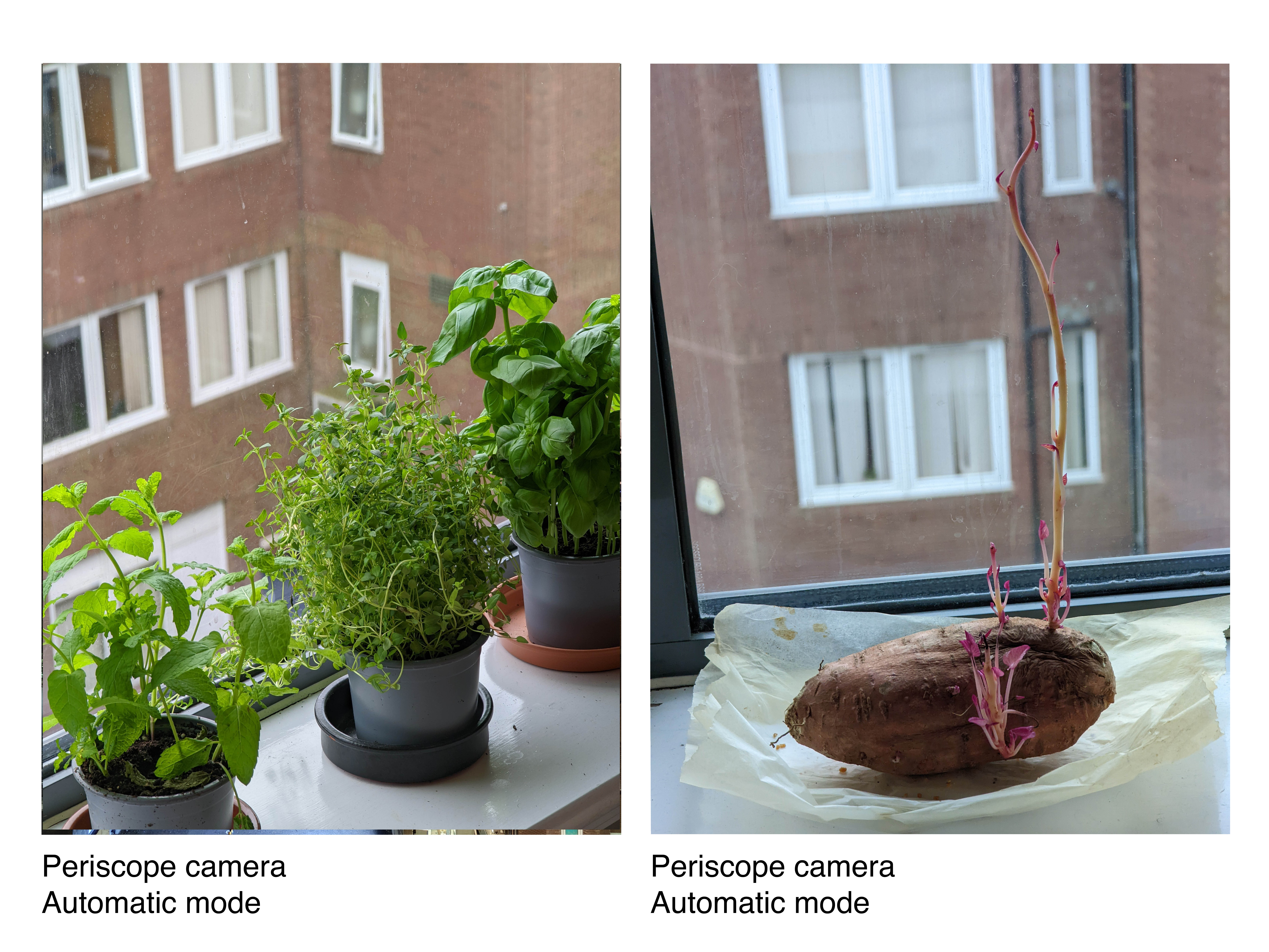
Camera performance
When you’re upgrading your phone, one of the first things you’ll want to know is – is the camera on my new phone better than the camera on my old phone? The answer is probably going to be a yes if you’re picking up the Pixel 6 Pro.
Compared side by side to photos taken on the Pixel 5, the Pixel 6 enjoys sharper detail and lower contrast. Out of the camera, pictures don’t always have that rich color balance the Pixel 5 photos tend to have, so aren’t always as vibrant, but they still carry a trademark Pixel balance and impressive dynamic range in shadows which we’ve gotten used to. Specific colors handled differently are reds, which look more subdued on the Pixel 6 Pro and blues, which are inversely more pumped up.
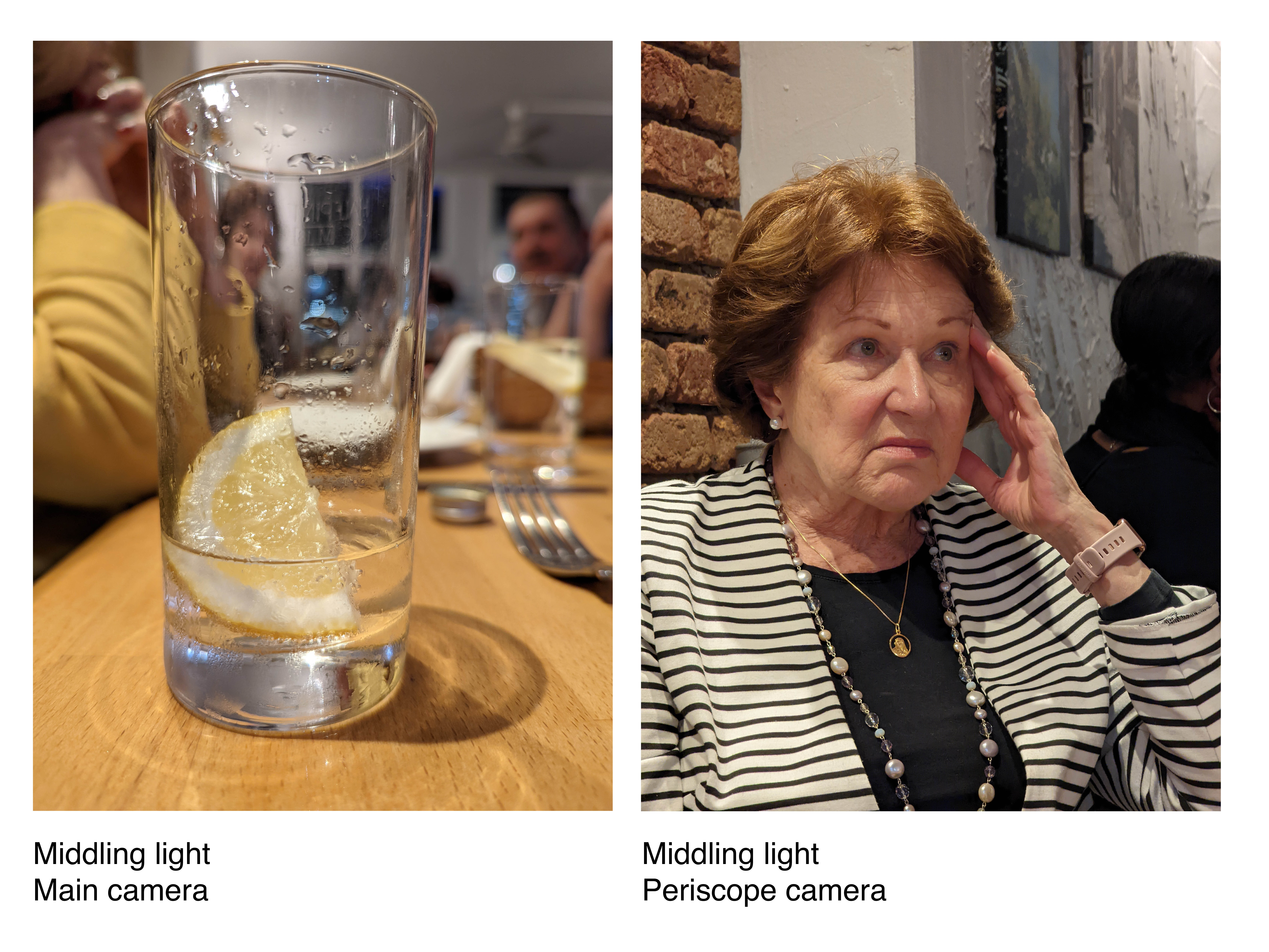

Exposure on the Pixel 6 Pro is also consistently greater than on the Pixel 5, which can result in some elements of a photo blowing out more readily. This isn’t a deal-breaker but is one area the new Pixel isn’t leading the smartphone pack.
Thanks to the new Pixel 6 and 6 Pro featuring a larger sensor, photos deliver a much shallower depth of field when compared to those of previous generation Pixels – we seldom felt the need to activate Portrait mode in our time with the phone. The camera is also quick to take a photo and can compensate for a slightly shaky hand well, in bright and dimly lit scenes alike.
While the ultra-wide camera didn’t impress us too much – it does the job, but can’t stack up to the best from Huawei or OPPO, the telephoto camera won us over. Capable of capturing inconspicuous, detailed portraits from a distance, and crisp close-up photos of objects with soft backgrounds, we found it reliable and a bit of a game-changer to finally have on a Pixel smartphone.
The new shooting modes are fun, and we were able to capture a lowlight handheld light trail with ease thanks to some smart software stabilization. This stabilization extends to video too, with support for one of four stabilized modes – Standard, Locked (when zooming), Active and Cinematic Pans. These were available on the Pixel 5, however come into their own when matched with the 6 Pro’s more capable hardware.
Pixel 6 Pro: Additional specs

We were concerned when we started using our Pixel 6 Pro review device. It got hot, and the battery drained quickly. The phone features an ample 5003mAh battery, so the drain was alarming, however, once our WhatsApp backup had finished downloading, our apps had installed and we’d been using the phone for a full day, it stayed relatively cool. The battery usage also normalized.
By about 11pm with moderate to heavy use, the Pixel 6 was down to around 10 percent which is good for a phone with such a large display. Its charging isn’t Xiaomi Mi 11T Pro levels of fast, but at 30W, still respectable, powering up 50 percent in around 30 minutes, and fully in around 90 minutes. The phone also enjoys fast wireless charging at 23W.
We found the under-display fingerprint scanner to be responsive. We also like the fact the Pixel 6 Pro starts with 128GB storage, versus 64GB on the Pixel 4 series. Nevertheless, there’s still no microSD card so if you think you’ll need more storage, buy the higher capacity option. Either 128GB or 256GB versions are available, and both feature 12GB RAM.
Also of note, the phone runs the latest version of Android, which balances new features with a light, easy-to-navigate interface that’s much less overbearing than UIs from the likes of Huawei and Xiaomi. When you pick up a Pixel, there’s a degree of future-proofing that you can expect, and with excellent app support, the promise of years of OS updates, and fun, new features and visuals, the software doesn’t let down Google’s excellent hardware.
Google Pixel 6 Pro: Verdict

The Pixel 6 Pro doesn’t have to be the best camera phone to be great, given it costs much less than the best from Apple and Samsung. That said, at $899 / £849 it still needs to be excellent, and it is.
From the design to the shiny new interface, other than an initial hot flush when setting up the phone, it kept its cool, lasted all day, performed well, and looked excellent in the process. The cameras are a touch subdued when capturing reds, and dynamic range could be better given it bumps up the exposure slightly when compared to the Pixel 5, however, as a package, the Pixel 6 Pro is a much better smartphone, and photo and video capture tool, making it one of the best camera phones of 2021.
We couldn’t be happier that Google is back in the flagship race, and that it has made a smartphone that’s actually exciting in a sea of similar shaped slabs – highly recommended and long-overdue vindication for patient Pixel fans.
Read more
• The best camera phones you can buy today
• Best Samsung phone in 2021
• The best budget camera phone
• The best burner phones
• The best phablet
• Which is the best iPhone for photography?
• Best phone cases
• Best wireless chargers
Basil Kronfli is a freelance technology journalist, consultant, and content creator. He trained in graphic design and started his career at Canon Europe before moving into journalism. Basil is also experienced in video production, independently running the YouTube channel TechEdit, and during his time at Future, he worked alongside the Digital Camera World team as a senior video producer.



